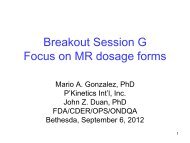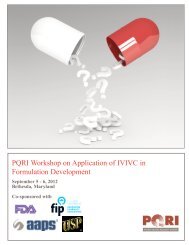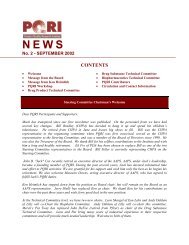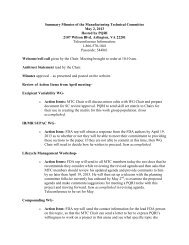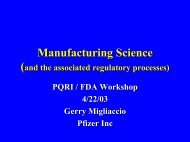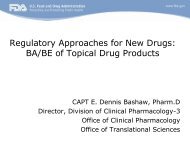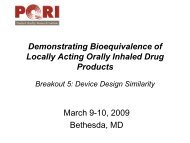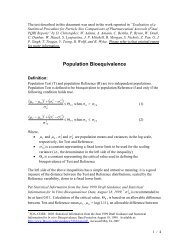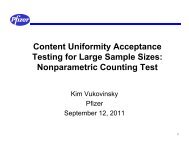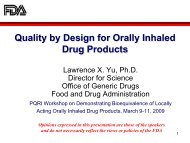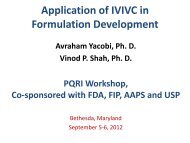Determination of Water Vapor Transmission Rate for High ... - PQRI
Determination of Water Vapor Transmission Rate for High ... - PQRI
Determination of Water Vapor Transmission Rate for High ... - PQRI
You also want an ePaper? Increase the reach of your titles
YUMPU automatically turns print PDFs into web optimized ePapers that Google loves.
Figure 7<br />
Slopes (mg/day)<br />
Broached and Intact<br />
Slope Summary<br />
Tables 1 and 2 summarize the slopes <strong>for</strong> the broached and intact bottles. Included in<br />
these tables is the number <strong>of</strong> containers (N) in the analysis and the minimum and<br />
maximum slope across the N containers. The mean, standard deviation, and RSD<br />
(relative standard deviation) can be used to evaluate differences between sites as well as<br />
variability <strong>of</strong> the slopes. The p-value indicates whether or not the slope is significantly<br />
different from zero, i.e. a statistically significant result (p < 0.05) indicates that the slope<br />
was significantly different from zero. All slopes were significantly different from zero<br />
except one (controls at Pf at the higher temperature condition).<br />
For the broached bottles (Table 1), note that the mean rate at 40/75 is similar across all<br />
laboratories (about 7 to 9.5 mg/day). The variability <strong>of</strong> the rates is much less at the lower<br />
temperature with respect to standard deviation but about the same with respect to RSD.<br />
See discussion <strong>of</strong> outliers below. Adjusting <strong>for</strong> the controls has little effect on the rate<br />
since the control slopes were so close to zero.<br />
8



